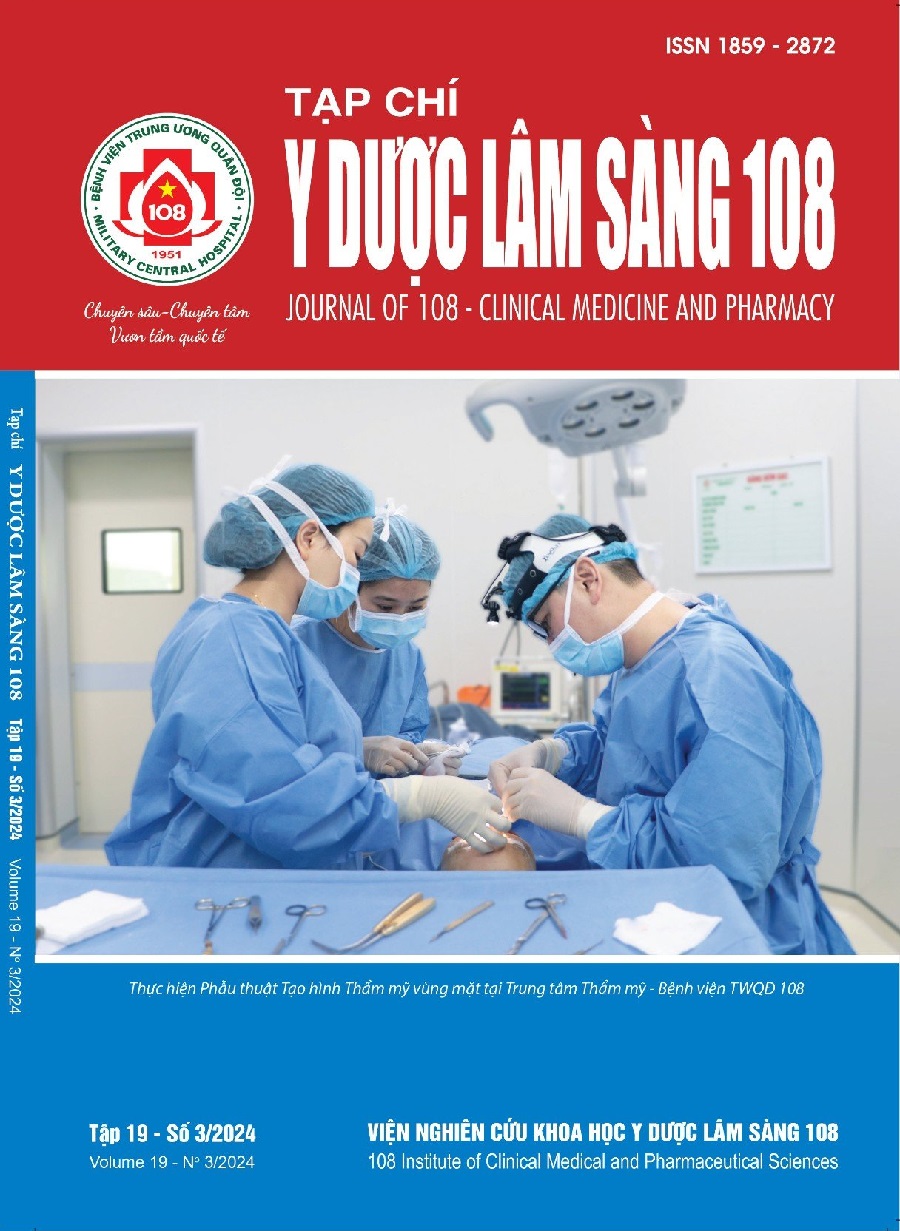Evaluation of the value of STIR sequence on magnetic resonance imaging (MRI) in identifying collapsed vertebrae causing acute pain associated with osteoporosis
Main Article Content
Keywords
Abstract
Objective: To evaluate the role of STIR sequence on magnetic resonance imaging (MRI) in identifying collapsed vertebrae causing acute pain associated with osteoporosis. Subject and method: A retrospective study of 113 elderly patients (> 60 years old) with vertebral collapse due to osteoporosis undergoing minimally invasive percutaneous cement augmentation techniques, vertebroplasty or kyphoplasty at the Department of Neurosurgery, 108 Military Central Hospital from January 2020 to December 2023. All patients underwent routine radiographic and spinal MRI with STIR sequence. Based on standard plain radiographs, the patients were divided into two groups: single-level and multilevel group. We compared the concordance (position and number of collapsed vertebrae) on standard plain radiographs and MRI. Result: The mean age of the study group was 69.3 ± 4.9 years old; including 22 men and 91 women. The rate of matching diagnosis between the two methods of the single-level group was 76%, the multilevel group was 35%. There was a statistically significant difference between the two groups (p<0.01). Conclusion: MRI with STIR sequence shows many benefits in identifying collapsed vertebrae caused by acute pain from osteoporosis. Therefore, MRI with STIR sequence should be routinely recommended prior to vertebroplasty or kyphoplasty.
Article Details
References
2. Kallmes DF, Comstock BA, Heagerty PJ et al (2009). A randomized trial of vertebroplasty for osteoporotic spinal fractures. N Engl J Med 361(6): 569-579.
3. Weinstein JN (2009) Balancing science and informed choice in decisions about vertebroplasty. N Engl J Med 361(6): 619-621.
4. Benz BK, Gemery JM, McIntyre JJ et al (2009) Value of immediate preprocedure magnetic resonance imaging in patients scheduled to undergo vertebroplasty or kyphoplasty. Spine (Phila Pa 1976) 34(6): 609-612.
5. Lenski M, Büser N, Scherer M (2017) Concomitant and previous osteoporotic vertebral fractures Acta Orthopaedica 88(2).
6. Hulme PA, Krebs J, Ferguson SJ et al (2006) Vertebroplasty and kyphoplasty: A systematic review of 69 clinical studies. Spine (Phila Pa 1976) 31(17): 1983-2001.
7. Zidan I, Fayed AA, Elwany A (2018) Multilevel Percutaneous Vertebroplasty (More than Three Levels) in the Management of Osteoporotic Fractures. J Korean Neurosurg Soc 61 (6) : 700-706.
8. Do HM (2000) Magnetic resonance imaging in the evaluation of patients for percutaneous vertebroplasty. Top Magn Reson Imaging 11(4): 235-244.
10. Lakadamyali H, Tarhan NC, Ergun T et al (2008) STIR sequence for depiction of degenerative changes in posterior stabilizing elements in patients with lower back pain. AJR Am J Roentgenol 191(4): 973-979.
11. Spiegl UJ, Beisse R, Hauck S et al (2009) Value of MRI imaging prior to a kyphoplasty for osteoporotic insufficiency fractures. Eur Spine J 18(9): 1287-1292.
12. Fritzell P, Taylor RS, Taylor RJ (2006) Balloon kyphoplasty and vertebroplasty for vertebral compression fractures: a comparative systematic review of efficacy and safety. Spine (Phila Pa 1976) 31(23): 2747-2755.
 ISSN: 1859 - 2872
ISSN: 1859 - 2872
